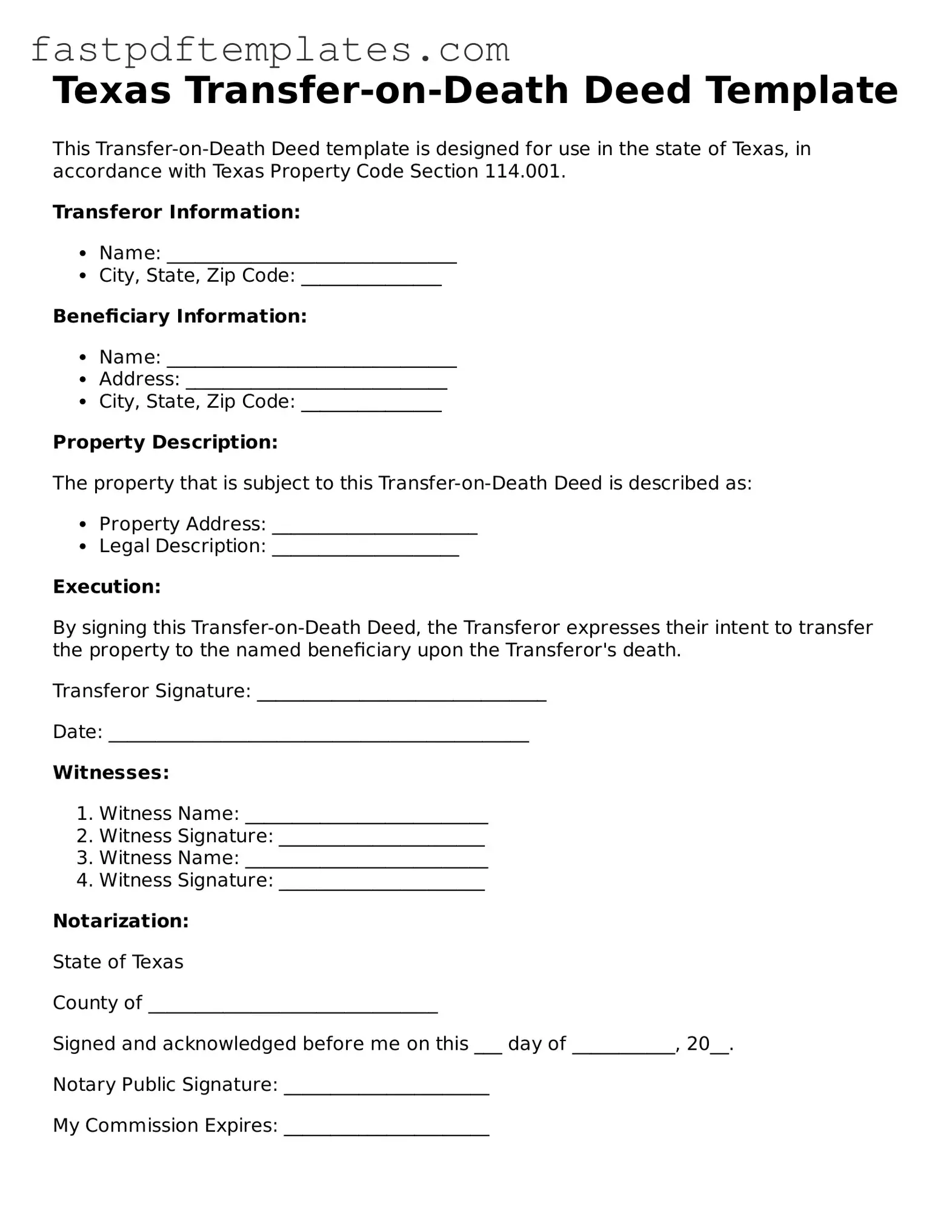The Texas Transfer-on-Death Deed (TODD) allows property owners to transfer real estate to beneficiaries upon their death without going through probate. A similar document is the Last Will and Testament. Like a TODD, a will specifies how a person's assets should be distributed after their passing. However, a will generally requires probate, which can be a lengthy and costly process, while a TODD allows for a more straightforward transfer of property directly to the designated beneficiaries.
Another document that shares similarities with the TODD is the Revocable Living Trust. Both instruments enable property owners to dictate how their assets are managed and distributed. A living trust can help avoid probate, much like a TODD, but it also allows for more comprehensive management of assets during the owner’s lifetime, offering flexibility that a TODD does not provide.
The Beneficiary Designation form is also comparable to the TODD. This document is commonly used for financial accounts and insurance policies, allowing the account holder to name beneficiaries who will receive the assets upon their death. Similar to a TODD, a beneficiary designation avoids probate and ensures a quick transfer of assets, but it typically applies to non-real estate assets.
Power of Attorney (POA) documents can resemble the TODD in terms of designating authority. A POA allows someone to make decisions on behalf of another person, including managing property. However, unlike a TODD, a POA is effective during the person’s lifetime and ceases upon their death, whereas a TODD only takes effect after the property owner passes away.
The Joint Tenancy with Right of Survivorship agreement is another document that functions similarly to a TODD. In this arrangement, two or more individuals hold title to a property together, and upon the death of one owner, the property automatically transfers to the surviving owner(s). This process bypasses probate, similar to the TODD, but joint tenancy requires co-ownership during the owner's lifetime, unlike the TODD, which allows for sole ownership until death.
The Life Estate Deed is also relevant in this context. This deed allows an individual to retain ownership and use of a property during their lifetime while designating a beneficiary to receive the property after their death. While both the Life Estate Deed and the TODD facilitate the transfer of property without probate, the Life Estate Deed grants certain rights and responsibilities to the life tenant, which can complicate matters compared to a straightforward TODD.
Another similar document is the Family Limited Partnership (FLP). An FLP allows family members to pool their resources and manage property collectively. While it can provide some estate planning benefits, including avoiding probate, it involves more complex management and tax considerations than a TODD, which is a simpler tool for transferring real estate.
The Affidavit of Heirship is also worth mentioning. This document is used to establish the heirs of a deceased person, particularly when no will exists. It can help facilitate the transfer of property without probate, similar to a TODD. However, it relies on the testimony of witnesses to confirm the heirs, which can lead to disputes, while a TODD clearly names beneficiaries at the time of its execution.
Lastly, the Assignment of Interest in a Trust can be likened to the TODD. This document allows an individual to assign their interest in a trust to another party. Both documents facilitate the transfer of property, but the assignment of interest typically involves more intricate trust management and obligations, whereas a TODD is a straightforward way to pass real estate directly to beneficiaries.
